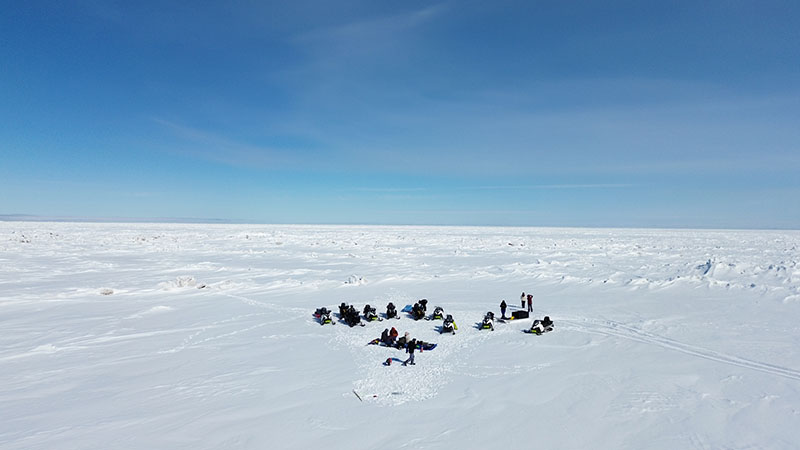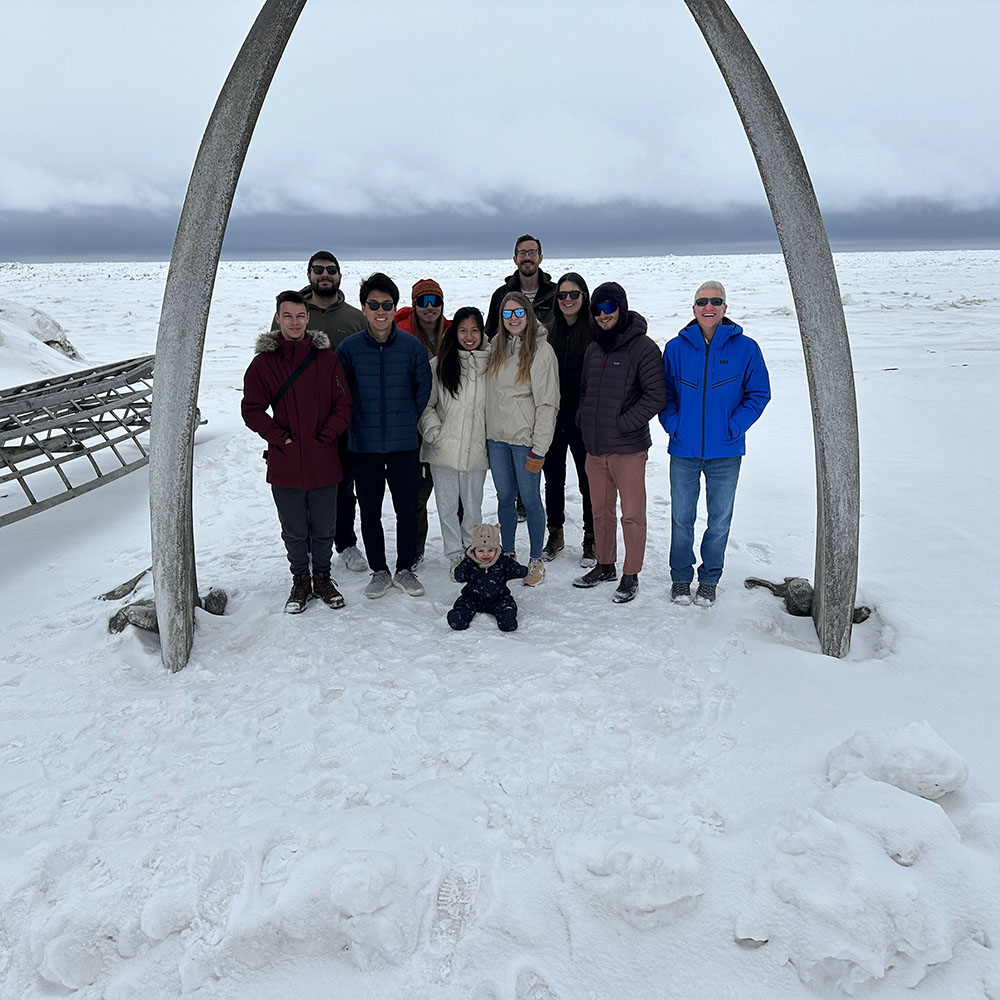Equations on Ice: Combining Mathematics with Fieldwork

Understanding the intersection of mathematics, physics, biology, and environmental science sometimes requires stepping outside of the classroom and into the natural world. For Jody Reimer, Assistant Professor in the Department of Mathematics and the School of Biological Sciences, and Ken Golden, Distinguished Professor in the Department of Mathematics and Adjunct Professor in the Department of Biomedical Engineering, this means venturing out into the Arctic where they can study how the physical environment affects life in and on the ice with the help of mathematical models.
In May of 2024, Golden and Reimer co-led a field research trip to Utqiaġvik, Alaska. This trip brought together a diverse team of mathematics students ranging from high schoolers to Ph.D. candidates, providing them hands-on experience in polar research. This was an opportunity to test mathematical models and field techniques and a chance for students to develop a deeper understanding of the unique and extreme conditions of the Arctic ecosystem. Reimer’s research focuses on how changes in sea ice impact polar bear and seal populations and how these animals respond to those changes. But her work doesn’t stop with these charismatic megafauna. She is also fascinated by the microbes that inhabit the ice itself and the adaptations that allow them to survive in such a harsh environment. Golden’s research focuses on the complex multiscale physical properties of the ice, from modeling macroscale ice floe dynamics down to calculating the porosity and permeability of its microscale brine inclusions. Together, they are exploring the complex interplay between physics and biology.
Since this was Reimer’s first time leading a field research expedition and the largest field team ever led by Golden, organizing the trip proved to be both a complex task and a valuable learning experience. Besides the anticipated logistical planning and coordination with university legal teams, the group also needed to acquire land use permits from the local Inupiat groups. In addition to logistical planning, students played a hands-on role in packing equipment and troubleshooting issues in the field. Luckily, the research station that the team based out of, the Barrow Arctic Research Center (BARC), provided accommodation and some logistical support, allowing the team to focus as much as possible on data collection. The BARC’s industrial kitchen allowed the group to prepare meals for their fieldwork days.
Once out in the field, these mathematicians braved the Arctic cold—temperatures dropped as low as 20 below freezing on their first day—to carry out experiments linking their mathematical models to real-world observations. Watching mathematics students immerse themselves in field research was one of Reimer’s favorite parts of the trip. She sees interdisciplinary integration as a crucial step in advancing applied mathematics.
One of the trip’s highlights was testing a tool called a PlanktoScope, which is an open-source and portable imaging device that allows researchers to analyze microbial life in sea ice samples. More affordable than traditional flow microscopy equipment, this tool allows for broader access to high-quality image data collection. In Reimer’s lab, one of her students is now processing the resulting images using AI-based tools, which helps sort and analyze thousands of microscopic snapshots of life hidden in the ice.

The trip’s success underscores the importance of hands-on fieldwork in mathematical research. Measurements that were collected align with the existing literature and will serve as pilot data for future projects and funding proposals. By blending mathematical modeling with empirical observation, students and faculty alike gain valuable insights into complex environmental systems. As Golden and Reimer analyze the data they collected in the Arctic, they are already planning future expeditions to expand on their findings and further explore the intricate relationships between ice, living beings, and climate change.
Funding for this trip was provided by the National Science Foundation (NSF) through the Applied Math Research Training Grant (RTG) and supports two trips, which means a repeat trip is being planned for next year.
by Izabella Bourland
